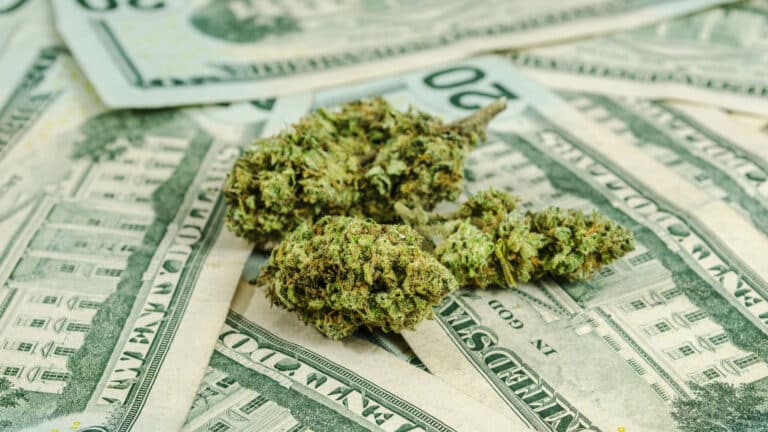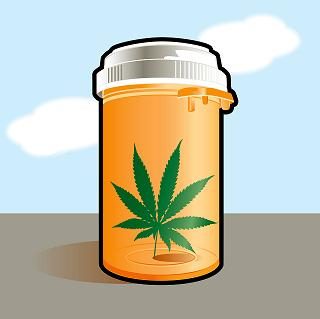The liquid inside the test tube is neon green, the color of lime Kool-Aid or the mad-scientist potions found only in comic books. They are a mixture of marijuana and solvents, stirred together in a furious swirl by a lab technician wearing protective goggles and latex gloves.
Running the concoction through a $70,000 machine, the technician can learn with scientific precision the plant’s unique chemical makeup, its potency, even its growing method.
The ultimate goal? Find out how good it is.
“We’re not going to be taken seriously unless we have proof,” said Michael Lee, the owner of the lab and its adjacent medical-marijuana dispensary, Cannabis Therapeutics.
This is the new science of pot, part of a fresh wave of study and innovation among scientists and cannabis advocates all seeking to solve a central dilemma: In Colorado and other states, first came the approval of marijuana as medicine. Next comes the challenge of proving its effectiveness.
The newest research leaves little doubt that marijuana – or at least its chemical components – has promise in alleviating symptoms of some ailments, while also making clear that the drug is not without its drawbacks, some potentially serious.
What is less certain is whether Colorado’s medical-marijuana system of dispensaries and caregivers – where commitment to scientific rigor and compassionate patient care is largely voluntary – can maximize that treatment potential for the benefit of patients.
Some dispensaries keep detailed patient records and embrace scientific testing in the hopes of providing patients with what works best. But medical-marijuana users report other dispensaries seem interested in just slinging snazzy weed, regardless of a patient’s needs or ailments. (One ad on Craigslist: “Licensed caregiver looking to trade for Widespread Panic tickets.”)
The mainstream medical community, meanwhile, questions whether any system that uses a raw plant as medicine can be optimally effective. Instead, conventional drug researchers see promise mostly in harvesting marijuana’s ingredients for more traditional medicines and avoiding consumption methods like smoking that can hurt patients’ health.
“If there is any future for marijuana as a medicine,” a panel of experts wrote in a landmark 1999 report for the National Academy of Science’s Institute of Medicine, “it lies in its isolated components.”
Most marijuana advocates enthusiastically embrace a future in which pot is as much an accepted medicine as penicillin. But that future might not come without significant changes to the way medical marijuana is handled. New medicines require new tests and government approvals. Those lead to new regulations and new oversight. There is a focus on standardization, sterility, precision, discipline.
If there were ever a world where marijuana was available behind the counter at the corner pharmacy, the do-it-yourself independence of Colorado’s – and many other states’ – medical-marijuana system might not have a place. The bud could become obsolete, and dispensaries – both medically inclined and not – could go extinct with it.
Indeed, not every marijuana supporter is watching the development of cannabis-based pharmaceuticals enthusiastically.
“When they get through the FDA with their cannabis-based drugs, no legislature in the country will allow doctors and patients access to whole, smoked marijuana,” said Allen St. Pierre, the executive director of NORML.
Medical mystery
Medical marijuana hasn’t always been a strictly on-your-own endeavor.
Historians have found references to the use of cannabis by healers in China and India dating back to at least 2000 B.C. The Irish physician William O’Shaughnessy wrote about the medical uses of cannabis in the mid-1800s. Cannabis-based treatments were commonly prescribed in the early 1900s in America before marijuana prohibition, which came about in the 1930s because of concerns over the drug’s psychoactive effects and fears they could lead to criminal behavior.
What was missing, though, was an understanding of how marijuana provided its touted medical benefits – or, for that matter, even a basic understanding of how marijuana gets people stoned.
“We knew marijuana has effects,” said Bob Melamede, a biology professor at the University of Colorado at Colorado Springs and a prominent marijuana activist. “So the question was, ‘How does it have them?’ ”
Answers arrived starting in the late 1980s with the discovery in the body of something called the endocannabinoid system. The system acts much like a traffic-control network, with receptors spread out across the brain, the organs, the immune system and various other areas to regulate functions as diverse as appetite, mood and pain. Using chemicals produced in the body called cannabinoids as traffic cops, the body turns on or off those receptors and controls the different functions.
Sending certain cannabinoids to one receptor and flipping it on, for instance, stimulates appetite. Tripping another dampens the body’s inflammatory response.
Marijuana also contains cannabinoids that can fit into the endocannabinoid system’s receptors – purely “pot luck,” Melamede cracks. Ingesting marijuana unleashes into the bloodstream swarms of new cannabinoid molecules that quickly begin linking into the system and flipping switches. This explains both the medical and recreational effects of the drug – which in many cases are one and the same.
By jiggering with the receptors that control appetite, for instance, marijuana creates the much-joked-about munchies. But it is that same effect that spurs the appetites and calms the stomachs of cancer and AIDS patients. In the same way marijuana impairs the motor skills of some users, it can also calm the painful muscle spasticity of multiple sclerosis patients.
Highs and lows
There is no scientific consensus that marijuana cures any disease or ailment. But research generally suggests smoking marijuana has pain-killing, muscle-calming, nausea-controlling and appetite-boosting effects in many patients. That means studies have shown marijuana can provide benefits to patients suffering from each of the eight different medical conditions specified in the state’s medical-marijuana constitutional amendment.
Scientists, though, disagree to what extent marijuana is beneficial and whether marijuana is more effective in those areas than existing treatments. Medical-marijuana supporters, meanwhile, cite other studies hinting at benefits in treating anxiety disorders, post-traumatic stress disorder and many other conditions.
Mostly, though, mainstream medical-marijuana studies and research reviews conclude that more thorough clinical trials of the drug are needed. Those follow-up studies are made difficult by federal drug-control laws, which place tight restrictions on marijuana research.
The proliferation of state medical-marijuana programs has been of little use to researchers, said Cecilia Hillard, a neuroscience professor at the Medical College of Wisconsin and a past president of the International Cannabinoid Research Society. Participants in those programs are self-selected, she said. That means those patients are pre-disposed to thinking marijuana will help, further muddying the scientific analysis of raw marijuana’s benefits and drawbacks.
“It’s hard to say how much people are really using it medicinally versus recreationally,” Hillard said. “Right now we’re sort of to a point where the claims of medical benefit are so numerous and so over-the-top that you tend to get into the realm of, ‘Well, I just don’t believe any of this.’ People are saying it’s good for everything.”
A handful of recent clinical trials – the first clinical trials of smoked marijuana in this country in 20 years – have provided some clarity. After being tasked by the California state legislature, the University of California at San Diego’s Center for Medicinal Cannabis Research sponsored about a half-dozen placebo-controlled trials to assess whether marijuana is effective as a painkiller for HIV and multiple sclerosis patients and for people suffering from nerve damage.
Across the board, the trials found some promise in marijuana as a treatment option.
“I was a little bit surprised, to tell the truth,” said Igor Grant, the center’s director. “I somewhat expected that what we would get is a mixed result . . . which would not be so unusual. But the fact that all of them came up with a consistent result makes me feel a little more comfortable in saying we could have something here.”
That does not mean, however, that Grant is ready to proclaim marijuana as a miracle treatment. For starters, patients in the trials generally continued on the drugs they were already taking for their conditions and used marijuana to supplement. Second, Grant said, smoking marijuana is just too impractical a delivery method for medicine. Among the questions: How do you control the dosage?
“Would you prescribe smoking cannabis cigarettes in a hospital room where oxygen tanks may be present?” Grant asked. “The great likelihood is that we need alternative systems.”
And that is exactly where marijuana’s pharmaceutical gold rush is taking place.
Separating help from high
Sitting at lunch one day recently in a restaurant near his UCCS office, Melamede, the biology professor, reaches into his jeans pocket and pulls out two small vials containing inky green liquid. They are marijuana extracts, he explains, formulas carefully measured for potency and chemical makeup that can be taken under the tongue in a predictable dosage. He also has ideas for marijuana skin patches, tongue strips and lozenges, all part of a new publicly traded pharmaceutical venture he has embarked on called Cannabis Science.
“The key thing is,” he said, “we’re addressing the government’s concern that smoked marijuana is not medicine.”
Cannabis Science recently hired a company to help it negotiate the Food and Drug Administration approval process, and Melamede said he is hopeful it won’t be long before the company can begin clinical trials targeting veterans with post-traumatic stress disorder and chronic pain patients.
But Melamede knows he is already behind in the race. GW Pharmaceuticals, a British firm, is currently preparing for its final clinical trials in the United States on a drug called Sativex, a marijuana-derived mouth spray the company intends as a treatment for cancer pain. The drug has already won approval in Canada and Great Britain and is in the last stages of approval in Spain.
What makes Sativex unique among current pharmaceuticals is that it is a blend of natural cannabinoids made directly from marijuana plants – grown in southern England – rather than synthetic re-creations of marijuana components, like drugs such as Marinol.
GW believes such an approach will yield better medicine, and it is already experimenting with other cannabinoid combinations for new drugs.
“There are more than 60 cannabinoids in the cannabis plant, so we believe that leaves plenty of scope for future development,” GW spokesman Mark Rogerson wrote in an e-mail.
Most exciting to those looking to establish marijuana’s potential benefits as medicine in a more socially accepted form is a cannabinoid called cannabidiol, or CBD. A batch of new studies suggest it may have medical effects like THC – the chemical in marijuana that gets a user stoned. But it eliminates the psychoactivity produced by THC. In other words, it’s medical pot that won’t get you high.
Colorado dispensaries have begun to stock marijuana strains high in CBD. But to tout a strain as being CBD-rich, it helps inspire consumer confidence to prove that it is, which is where laboratory testing comes in. Using pricey machines called high-performance liquid chromatography systems, medical-marijuana labs can detail the percentages of THC, CBD and a handful of other cannabinoids in the plant. The lab work is unchecked by the government and is performed only by labs either connected to or hired by dispensaries.
A number of dispensaries across the state now routinely place little cards detailing the test results next to each strain in their display cases. Patients can use the cards to pick marijuana suited to their need based on the numbers and not the strain names, which aren’t always descriptive of a strain’s effects.
“We hope to take the mystery out of the names and put in more science,” said Frank Quattrone, the owner of Pure Medical Dispensary in Denver. “. . . The names, hopefully, will become irrelevant.”
Dispensaries have also used the laboratory analysis as a guide in developing more potent product. Cannabis Therapeutics in Colorado Springs has developed a hash oil – essentially concentrated marijuana – that it touts as 86 percent THC. (Even the most knock-out marijuana buds are usually no more than 20 percent THC.)
Andreas Rivera, Cannabis Therapeutics’ manager, says the oil will only be sold to terminally ill patients as a form of palliative care.
“It’s really about pain management instead of getting people super stoned,” he said.
But the availability – and marketability – of such products raises a question: Are patients actually using the analyses to find the best medicine or the best high?
Inside Cannabis Therapeutics, it is clear most patients currently see only limited value in the new data. Some ask about the numbers, but their eyes quickly glaze over during the explanation. Others skip the numbers entirely, instead choosing by past experience or the much cruder ratio of how much “upper” versus “downer” the strain contains.
Most patients rely to some extent on the advice of the woman working behind the counter, Julie Anderson.
“I usually ask Julie what the best she’s got is,” said patient Frederick Ross, who suffers from such severe appetite loss because of various medical conditions that he eats only once a day. “I don’t play the numbers.”
But some patients have taken an interest in the new data. One woman with kinky, waist-length, brown hair crouched in front of the counter to study the numbers for several minutes before making her selection. She said she has been writing down the THC and CBD ratios of the strains she’s tried and has used the data to guide her decisions.
“I’m trying to apply some analysis to it and some logic based on the information I have,” explained the woman, who asked that her name not be used because she didn’t want her co-workers to know she is a medical-marijuana patient. “Hopefully I can make a more-educated decision.”
Whatever the efforts by dispensaries to put more science behind their products, though, they’re likely to be met with a sniff from the pharmaceutical industry, which believes most people will never accept taking medicine by smoking a raw plant.
“The current system of distribution may actually prevent cannabis from ever being accepted as a mainstream medicine by most patients and physicians,” GW’s Rogerson said.
People in the medical-marijuana business naturally bristle at such talk. But among some there is a sense that wider acceptability of marijuana by the medical world might actually restrict marijuana access.
State medical-marijuana programs, NORML’s St. Pierre explained, function as relative oases for cannabis access – bypassing a whole set of federal rules because the federal government simply refuses to participate. Right now, marijuana is legally a Schedule I controlled substance because the federal government sees no accepted medical use for it and considers it to have a high potential for abuse. That classification means doctors can’t prescribe it and pharmacists can’t distribute it.
If marijuana were to be placed in a less-restrictive classification – as a petition currently pending with the Drug Enforcement Administration requests – doctors potentially would be able to prescribe it. That ability, though, would bring with it Food and Drug Administration oversight, production controls, inventory caps, distribution limits, security rules and more. Plus, with a federally blessed system to get patients cannabis in the same way they get cholesterol drugs, why would most state governments continue with their jury-rigged medical-marijuana systems?
“We see this as a boxed canyon,” St. Pierre said.
Limitless learning
Back at Cannabis Therapeutics’ lab, John Kopta – a Colorado State University biochemistry grad who runs the facility – is more optimistic. Only a few other labs in the country, mostly connected to the medical-marijuana industry, are doing what his does. The more study they do, the more proof they have. The more proof they have, the more they can lead the way forward.
“There’s dozens of different cannabinoids in the plant, and we know of 10 of them and what they do,” he said. “It’s really limitless.”








